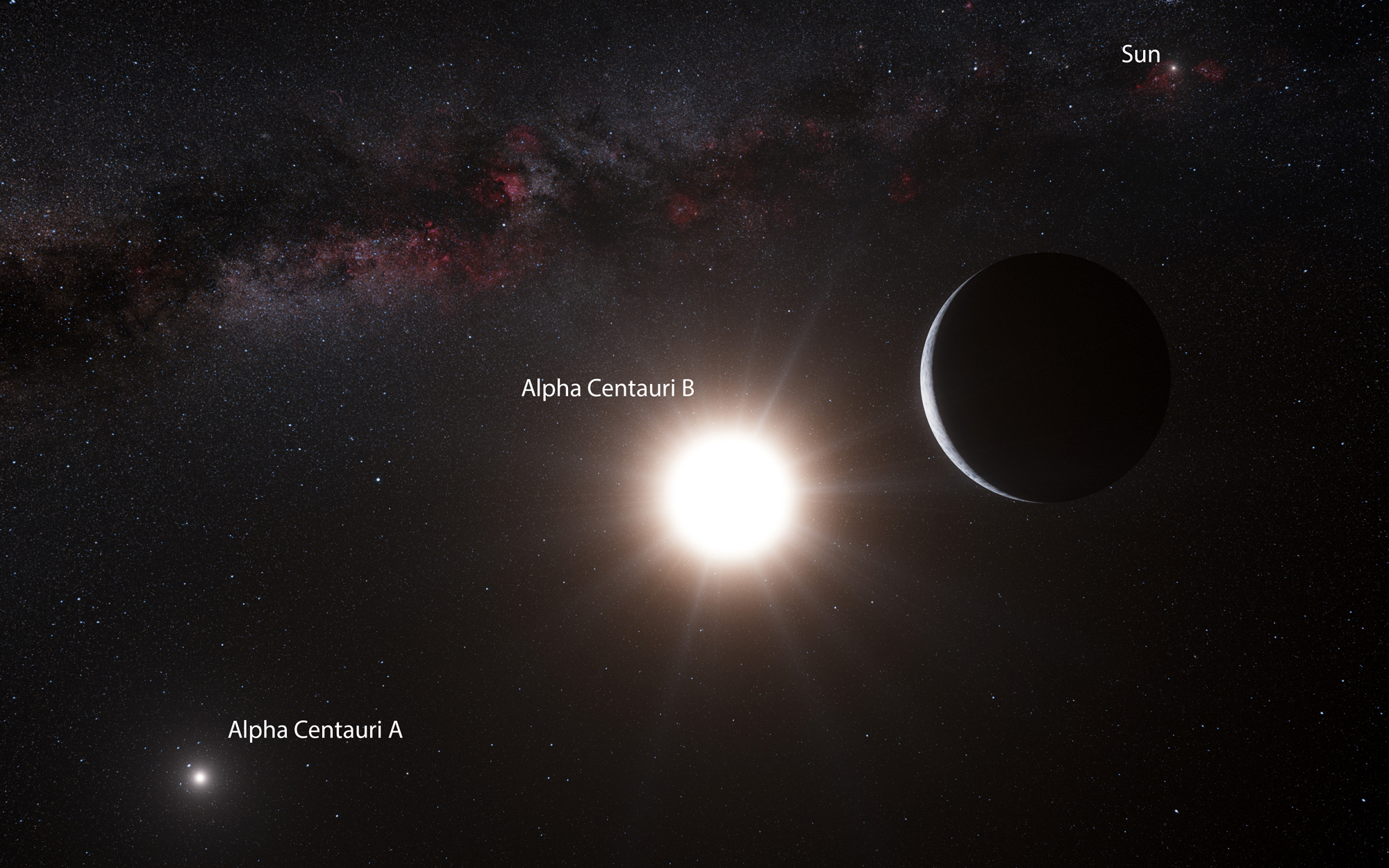10 Space Discoveries by the European Southern Observatory
Peering Into the Cosmos
Since the first telescope began operating in 1966, ESO has sparked several changes in how we perceive the universe. Astronomers watched the universe accelerate as it expanded, and learned more about the young universe's appearance. Telescopes at ESO have also snapped pictures of distant planets and helped to measure the weight of humongous stars.
Here, SPACE.com selects the top discoveries of ESO and the astronomers who have used its facilities in Chile.
FIRST STOP: Biggest Star Found
Biggest Star Ever (2010)
At 300 times the mass of our sun, R136a1 tips the scales of what astronomers thought was possible. It lies 165,000 light-years from Earth in a galactic star-forming factory. This heavyweight, observed with ESO's Very Large Telescope and confirmed with Hubble Space Telescope archival data, is over double the size scientists thought stars could reach.
NEXT: The Blue Universe
The Universe's Bluer Years (2003)
Astronomers found the color of the young universe from observations with ESO's Very Large Telescope. They studied more than 300 galaxies in the southern sky and discovered that the early universe, at 2.5 billion years old, was much bluer than it is today because it was filled with young, blue stars. Because blue stars emit more light than old stars – and the universe has as much light now as it did in the past – the findings imply there were fewer stars in the universe's early years.
NEXT: Measuring Pluto and Charon
First Accurate Measurements of Pluto and Charon (1986)
From watching the light curve of Pluto and its moon Charon during eclipses with ESO La Silla telescopes, astronomers were able to narrow down the size of the two objects. Pluto, then considered a planet, has a diameter of roughly 1367 miles (2200 kilometers), plus or minus 87 miles (140 kilometers). Its largest moon, Charon, was measured at roughly 721 miles (1160 kilometers). Better measurements will be available when the New Horizons mission passes by the Pluto system in 2015.
Breaking space news, the latest updates on rocket launches, skywatching events and more!
NEXT: 1st Direct Exoplanet Spectrum
First Direct Spectrum of an Exoplanet (2010)
Scientists used ESO's Very Large Telescope to spot the chemical composition of a planet some 130 light-years from Earth. This planet is about 10 times the size of Jupiter, with a surface temperature of 1472 degrees Fahrenheit (800 degrees Celsius). This was the first time the spectrum was observed from direct observations of a planet. Previous methods entailed watching a planet disappear behind a star, then observing the differences in spectra to obtain the planet's chemical composition.
NEXT: Supernovas' Gamma-Ray Link
Linking Gamma Rays with Supernovas (2003)
After a gamma-ray explosion sparkled in the constellation Leo on March 29, 2003, Australian and Japanese telescopes detected a bright light source in the same spot within 90 minutes. ESO telescopes then took the first spectrum of the object. They found this large supernova or "hypernova" was 2.65 billion light-years away, and were able to link it with the explosion of gamma rays.
NEXT: Next-Door Alien Planet
Earth-Sized Planet Found in the Star System Next Door (2012).
A planet with roughly the same mass as Earth was discovered close to Alpha Centauri B, which is part of a three-star system only 4.3 light years from Earth. An ESO telescope at La Silla sensed the planet through measuring the wobbles of the star. The planet is causing Alpha Centauri B to move back and forth at 1.1 miles (1.8 kilometers) an hour, the same speed as a baby's crawl.
NEXT: Adaptive Optics Pioneer
Pioneering Adaptive Optics (1989)
ESO was among the first observatories to test "adaptive optics," a technique used to make corrections for the turbulence of Earth's atmosphere. A telescopic mirror, hooked up to a computer, is automatically adjusted as the atmosphere flexes. This allows light to come to the telescope with greater precision – meaning we can see farther into space. Adaptive optics is a standard technique used today.
NEXT: Confirming the Universe's Hot Past
Confirming the Universe's Hot Past (2000)
Researchers took the temperature of the universe's echo of the Big Bang – cosmic microwave background radiation – from when the universe was just 2.5 billion years old. An ESO telescope made spectrum measurements of a quasar, which is a bright, distant galaxy powered by a huge black hole. The quasar's glow showed that the universe was warmer than it is now.
NEXT: Expansion of Universe Accelerating
Expansion of Universe Accelerating (1998)
From studying the brightness of star explosions, researchers discovered the universe is not only expanding, but accelerating as it gets bigger. Telescopes at ESO and other observatories, including the Hubble Space Telescope, determined this through measurements of Type Ia supernovas. The lead discoverers received the 2011 Nobel Prize in Physics.

Elizabeth Howell (she/her), Ph.D., was a staff writer in the spaceflight channel between 2022 and 2024 specializing in Canadian space news. She was contributing writer for Space.com for 10 years from 2012 to 2024. Elizabeth's reporting includes multiple exclusives with the White House, leading world coverage about a lost-and-found space tomato on the International Space Station, witnessing five human spaceflight launches on two continents, flying parabolic, working inside a spacesuit, and participating in a simulated Mars mission. Her latest book, "Why Am I Taller?" (ECW Press, 2022) is co-written with astronaut Dave Williams.










